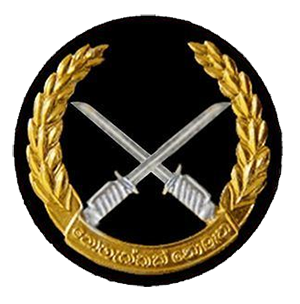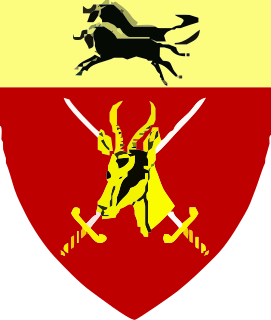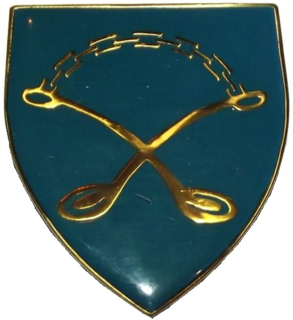| 3 Reconnaissance Commando | |
|---|---|
| Active | May 1976–1980 |
| Disbanded | 1980 |
| Country | South Africa |
| Allegiance | |
| Branch | |
| Type | Special forces |
| Role | Reconnaissance |
| Part of | South African Defence Force |
The 3 Reconnaissance Commando was a South African special forces unit.
| 3 Reconnaissance Commando | |
|---|---|
| Active | May 1976–1980 |
| Disbanded | 1980 |
| Country | South Africa |
| Allegiance | |
| Branch | |
| Type | Special forces |
| Role | Reconnaissance |
| Part of | South African Defence Force |
The 3 Reconnaissance Commando was a South African special forces unit.
It was established on 1 May 1976 [1] as an administrative umbrella for various small team operations such as Delta 40 and Barnacle which were the fore-runners of the Civil Co-operation Bureau (CCB). It operated as the covert arm of Special Forces. [2]
In April 1980, a new unit called 7 Reconnaissance Commando was formed. This unit was created to accommodate the Rhodesian soldiers who did not wish to remain in Rhodesia after majority rule. These were primarily Selous Scouts with a smattering of soldiers from other units. 120 of these soldiers and their families were housed on a new base created on the farm Schiettocht, outside Phalaborwa. They formed the nucleus of the new unit. [1]
The name of the unit was changed from 7 to 3 Reconnaissance Commando to avoid confusion with 7 South African Infantry Battalion (7 SAI) which was also located in Phalaborwa. [1] The Truth and Reconciliation Commission does not seem to have picked up on this distinction, getting the two units confused. [2]
In December 1980, 5 Reconnaissance Commando moved from Dukuduku to Schiettocht and on 1 January 1981, joined forces with 3 Reconnaissance Commando to form 5 Reconnaissance Regiment. [1]
Officers commanding were: [2] [1] [lower-alpha 1]

The South African Special Forces Brigade, colloquially known as the Recces, is South Africa's principal special operations unit, specialising in various types of operations including; counter-insurgency, long-range-reconnaissance, unconventional-warfare, special operations, hostage-rescue, and direct-action operations. The brigade operates with two active-duty groups, with 4 Special Forces Regiment focusing on maritime operations, and 5 Special Forces Regiment focusing on land and airborne operations. Only about 8% of recruits who undergo South African special forces training pass the course.

32 Battalion was a light infantry battalion of the South African Army founded in 1975, composed of black and white commissioned and enlisted personnel. It was disbanded on 26 March 1993.
The 1 Reconnaissance Commando was the first South African special forces unit, founded by General Fritz Loots - the founder of the South African Special Forces, and the first General Officer Commanding of the South African Special Forces. He appointed 11 qualified paratroopers as the founder members. Included in these 11 paratroopers was Jan Breytenbach, who was placed in command of the Founder Members by General Loots.

The 1st Battalion, Rhodesian Light Infantry (1RLI), commonly The Rhodesian Light Infantry (RLI), was a regiment formed in 1961 at Brady Barracks as a light infantry unit within the army of the Federation of Rhodesia and Nyasaland. Barely a year after its creation, it was relocated to Cranborne Barracks (Salisbury) where its headquarters remained for the rest of its existence. The Regiment became part of the Southern Rhodesian Army when the Federation dissolved at the start of 1964 and, later that year, reformed into a commando battalion.

The Rhodesian Special Air Service or Rhodesian SAS was a Rhodesian special forces unit. It comprised:

The Commando Regiment is the commando formation of the Sri Lanka Army. The unit specializes in various roles including hostage rescue, counter-terrorism, unconventional warfare, special reconnaissance, counter-insurgency, and personnel recovery. It was formed in 1980 and is based in Ganemulla, a suburb of Colombo.
Special Forces of Zimbabwe are the units of the Zimbabwe National Army that operate as special forces. These forces have been deployed in several African conflicts, including the Mozambique Civil War and the Second Congo War.

44 Parachute Brigade was a parachute infantry brigade of the South African Army. It was founded on 20 April 1978, by Colonel Jan Breytenbach, following the disbandment of 1 SA Corps and the battle of Cassinga. Upon formation, the brigade was commanded by Brigadier M. J. du Plessis, who was assigned the task of establishing by working with the Parachute Staff Officer, Colonel Jan Breytenbach. At the time du Plessis was the commanding officer of the Orange Free State Command and had previous experience serving in 1 Parachute Battalion. Breytenbach had also been a member of 1 Parachute Battalion and had also founded the South African Special Forces Brigade and 32 Battalion. The location that was chosen for the brigade's headquarters was in the lines of the OFS Cmd Headquarters, next to the old Tempe Airfield in Bloemfontein.

The 1st Battalion, The Rhodesian Light Infantry, commonly the Rhodesian Light Infantry, was originally formed in 1961 as a regiment of the army of the Federation of Rhodesia and Nyasaland. Raised as a light infantry unit at Brady Barracks, Bulawayo in Southern Rhodesia, the Regiment served in the Rhodesian Bush War as part of the Rhodesian Security Forces between 1964 and 1979, from 1965 under the unrecognised governments of Rhodesia and latterly, during the second half of 1979, Zimbabwe Rhodesia. The RLI remained active during an interim period under British control and then, from April 1980, within the armed forces of Zimbabwe, before disbanding on 31 October 1980.

The 1st Battalion, The Rhodesian Light Infantry, commonly the Rhodesian Light Infantry, served in the Rhodesian Bush War as part of the Rhodesian Security Forces between 1964 and 1979, under the unrecognised government of Rhodesia following its 1965 Unilateral Declaration of Independence from Britain. During the second half of 1979 it fought for Zimbabwe Rhodesia, a black majority-ruled version of the same state which also failed to win international recognition. After an interim period under British control from December 1979 to April 1980, the RLI briefly remained active within the armed forces of Zimbabwe, but did not see action under this government. It disbanded on 31 October 1980.
The 1st Battalion, The Rhodesian Light Infantry, commonly the Rhodesian Light Infantry, served in the Rhodesian Bush War as part of the Rhodesian Security Forces between 1964 and 1979, under the unrecognised government of Rhodesia after its Unilateral Declaration of Independence from Britain on 11 November 1965. Latterly, during the second half of 1979, it fought for Zimbabwe Rhodesia, a reorganised version of Rhodesia under a black majority government which still went unrecognised. After an interim period under British control from December 1979 to April 1980, the RLI briefly remained active within the armed forces of the internationally recognised Republic of Zimbabwe, but did not see action under this government. It laid up its colours on 17 October 1980 and disbanded two weeks later.

Southern Rhodesia, then a self-governing colony of the United Kingdom, sent two military units to fight with the Commonwealth armed forces in the Malayan Emergency of 1948–60, which pitted the Commonwealth against the Malayan National Liberation Army (MNLA), the military arm of the Malayan Communist Party. For two years, starting in March 1951, white Southern Rhodesian volunteers made up "C" Squadron of the Special Air Service (SAS). The Rhodesian African Rifles, in which black rank-and-filers and warrant officers were led by white officers, then served in Malaya from 1956 to 1958.
The 44 Pathfinder Platoon is part of the 44 Parachute Regiment. The pathfinder is a trained and specialized paratrooper, who performs covertly behind enemy lines, either in small groups or in collaboration with other reconnaissance units.

Natal Command was a Command of the South African Army. It was headquartered in Durban, South Africa. By the 1980s, it was responsible for the security of the region, forming the primary level of command for military operations in support of the Police. It also provided logistic, administrative and service support to units and formations operating in its area of responsibility.
2 Reconnaissance Regiment was the Active Citizen Force unit of the South African Special Forces. Its part-time service personnel formed part of the reserve component of the South African Defence Force.

Eastern Province Command was a command of the South African Army.
The 4 Reconnaissance Commando is a defunct South African Special Forces unit of the South African Defence Force that was formed in July 1978, specialising in amphibious operations.

113 Battalion was a motorised infantry unit of the South African Army.